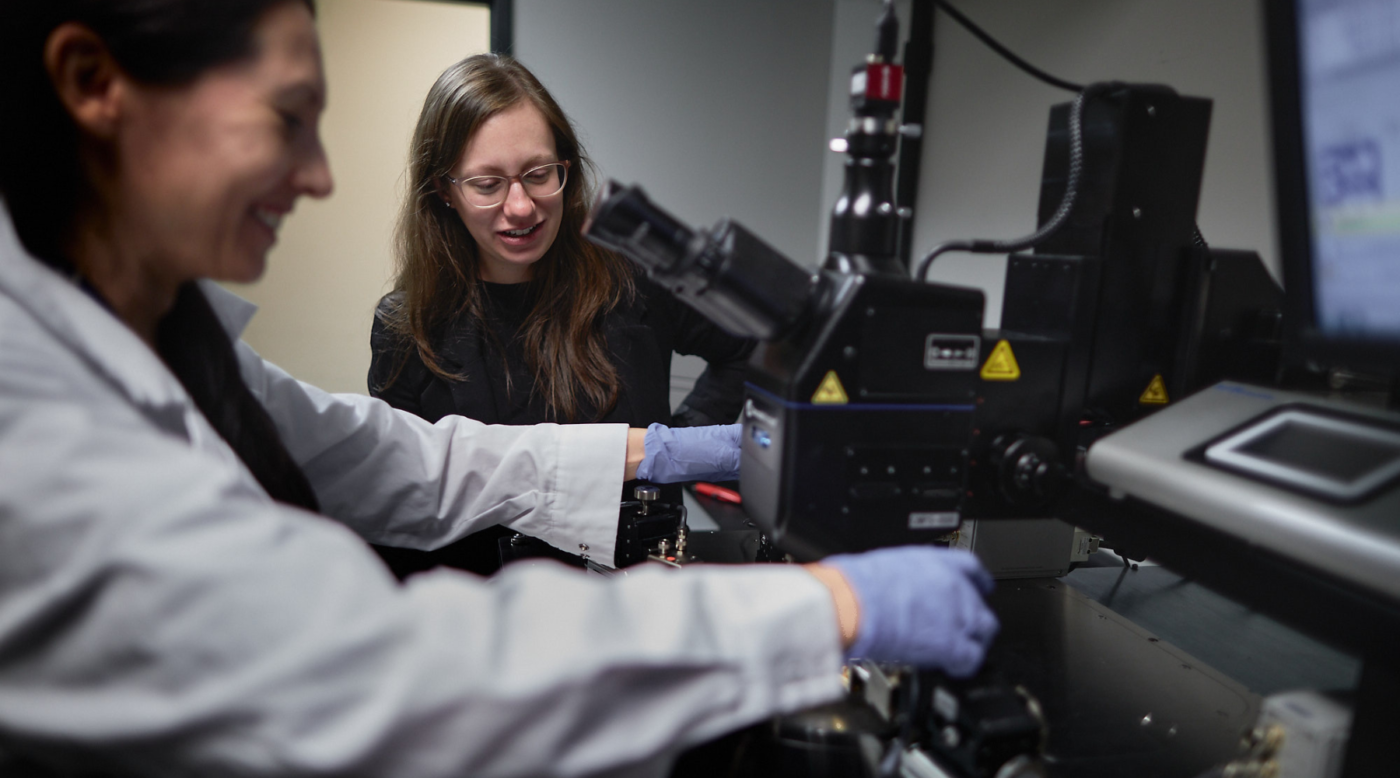News
A NOVA grant for Delphine Bouilly and her partners
Published on May 25, 2023
IRIC congratulates Delphine Bouilly, Director of the Design and Application of Electronic Nanobiosensors Research Unit, who was awarded a NOVA grant of $225,000 over three years for the project “Functionalized bilayer graphene devices: achieving selectivity and sensitivity”. Offered jointly by the Fonds de recherche du Québec – Nature et technologies and the Natural Sciences and Engineering Research Council of Canada, this grant supports research projects led by up-and-coming researchers from Québec in collaboration with researchers from other Canadian provinces and territories.
Delphine Bouilly’s team will collaborate with Sébastien Côté, guest researcher at IRIC and physics teacher at Cégep de Saint-Jérôme, as well as with the teams of Thomas Szkopek, Full Professor in the Department of Electrical and Computer Engineering at McGill University, and of Adina Luica-Mayer, Associate Professor in the Department of Physics at the University of Ottawa, to carry out this project.
An original modified bilayer architecture
Graphene is a very thin surface of carbon atoms with remarkable electrical transport properties. Sensitive to surrounding molecules, it is a very interesting material for the creation of detection devices. By chemically modifying the surface of graphene, it is possible to make these devices selective for molecules of interest. However, these modifications can alter the conductivity, and therefore the sensitivity, of graphene-based sensors. To overcome this, the research team proposes a new architecture based on modified bilayer graphene. This original design brings multiple advantages. First, the bilayer makes it possible to decouple selectivity from sensitivity: the upper layer is devoted to selectivity, while the lower layer preserves the electrical conduction properties. In addition, the modulation of the torsion angle between the two layers of graphene opens up a multitude of design possibilities, hitherto unprecedented in the field of sensors.
Challenges in using modified graphene bilayers as sensors
To implement the proposed architecture, the team will need to control the distribution of modifications on the surface of the top layer, and model the sensitivity of the bottom layer for the capture of the desired molecules. A combination of experimental and numerical approaches, including theoretical calculations, computer simulations, various imaging techniques and electrical measurements, will be applied and correlated to generate a unique multidimensional understanding of the modified graphene bilayer structure.
“This project will enable us to investigate fundamental physics questions about the link between the atomic structure of materials and their performance as biosensors,” says Professor Bouilly, “What we are going to discover through this work will certainly enable us to improve the prototypes we design in our cancer biosensor projects.”
